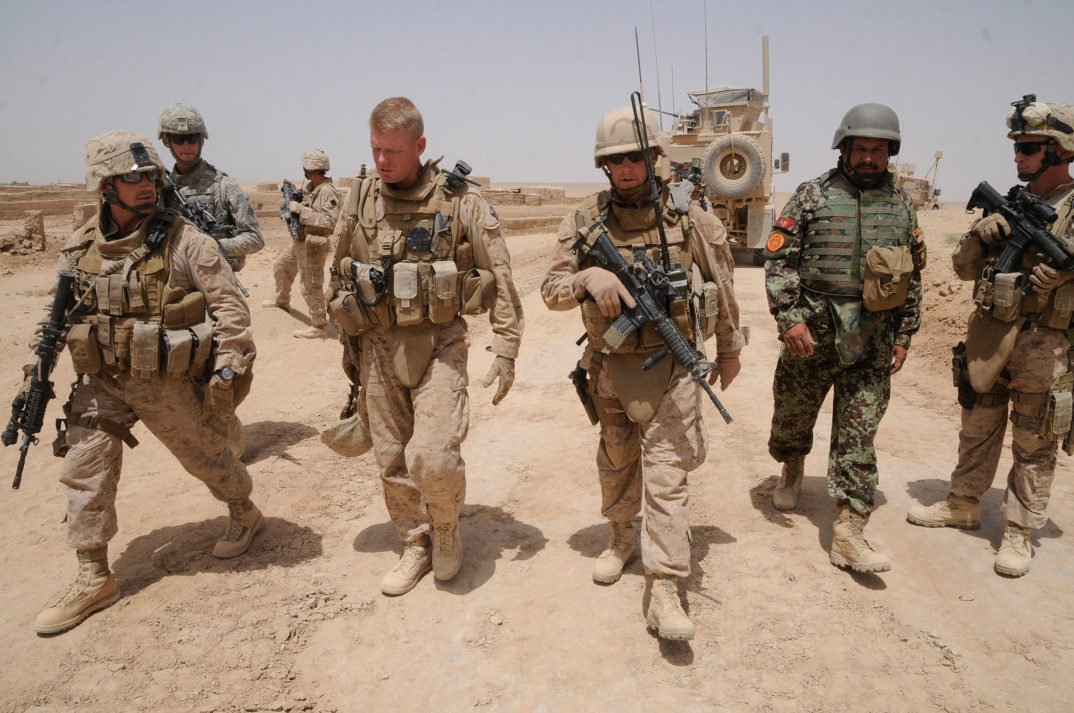President Donald Trump has ruled out a US withdrawal from Afghanistan, saying that the move would leave a vacuum for terrorists to fill.
Donald Trump said his original instinct was to pull US forces out, but had instead decided to stay and “fight to win” to avoid the mistakes made in Iraq.
The president said he wanted to shift from a time-based approach in Afghanistan to one based on conditions on the ground, adding he would not set deadlines.
However, President Trump warned it was not a “blank cheque” for Afghanistan.
He said: “America will work with the Afghan government, so long as we see commitment and progress.”
The Taliban responded by saying that Afghanistan would become “another graveyard” for the US if it did not withdraw its troops.
President Trump has committed to stepping up the US military’s engagement in Afghanistan, but details were few and far between.
The president said his new approach would be more pragmatic than idealistic, and would switch from nation building to “killing terrorists”.
However, Donald Trump refused to get drawn on how many extra troops, if any, would be deployed and gave no timeline for ending the US presence in Afghanistan.
Washington is expected to send up to 4,000 additional troops, but President Trump did not comment on this.
He did, however, put pressure on neighboring Pakistan, warning that the US would no longer tolerate it offering “safe havens” to extremists – an accusation swiftly dismissed by a Pakistani army spokesman.

Taliban Bomb Attack on Afghanistan Parliament
Bowe Bergdahl: US army launches investigation into Afghanistan captivity
Five US troops die in friendly-fire incident in Afghanistan
Barack Obama: US will keep 9,800 troops in Afghanistan after 2014
President Trump also, for the first time, left the door open for an eventual peace deal with the Taliban, saying: “Someday, after an effective military effort, perhaps it will be possible to have a political settlement that includes elements of the Taliban in Afghanistan.”
However, he said there would be an escalation in the battle against groups like al-Qaeda and ISIS.
“[They] need to know they have nowhere to hide – that no place is beyond the reach of American arms,” President Trump said.
Meanwhile, he made it clear he expects his existing allies – singling out India – to support him in his new strategy, and urged them to raise their countries’ contributions “in line with our own”.
Before his presidency, Donald Trump was not shy about criticizing his predecessors on their Afghanistan policy. He previously supported pulling US troops out of the conflict, which began under President George W. Bush in 2001 after the 9/11 attacks.
In November 2013, he said: “We have wasted an enormous amount of blood and treasure in Afghanistan. Their government has zero appreciation. Let’s get out!”
However, early on in his presidential campaign, he did acknowledge that US troops would have to stay in order to avoid the total collapse of the Afghan government.
This long-awaited announcement came after a months-long review, with the president himself acknowledging that his original instinct to pull-out had been reversed after discussions with national security advisers.
Afghan President Ashraf Ghani welcomed the plan, saying: “The US-Afghan partnership is stronger than ever in overcoming the threat of terrorism that threaten us all.”
He said the new strategy would enhance the training of Afghan security forces.
NATO chief Jens Stoltenberg also praised the move and said the alliance, which has about 12,000 troops in Afghanistan, would not allow the country to become “a safe haven for terrorists who would attack our own countries”.
General John Nicholson, the head of both US and international forces in Afghanistan, said it “means the Taliban cannot win militarily”.
However, Taliban spokesman Zabiullah Mujahid dismissed President Trump’s strategy as “nothing new”, telling the US to think of an exit strategy “instead of continuing the war”.
US combat operations against the Taliban officially ended in 2014, more than 8,000 Special Forces continue to provide support to Afghan troops.
The Afghan government continues to battle insurgency groups and controls just half of the country.
